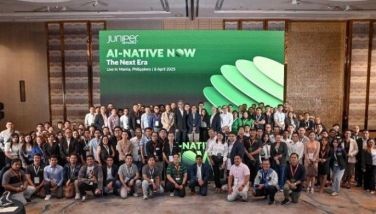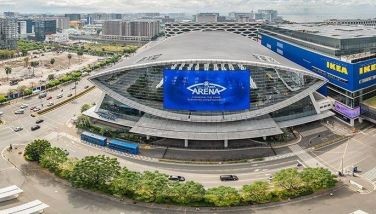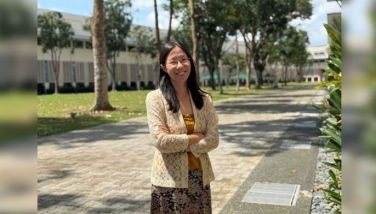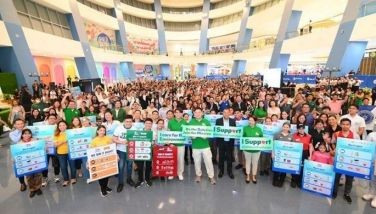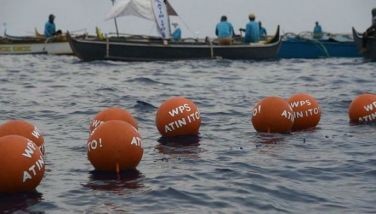Time to go out and plant a tree

I remember being gifted with a mahogany seedling many years ago, many years before I found out mahogany is not the preferred species for sustainable forests and biodiversity. I planted it in a small lot I have since sold, so it must be giving some shade to the new lot owners, even if it is not a preferred species of animals and insects. Now we know. But still, we see many mahogany forests as people are not aware of the other endemic or native trees we must be planting.
One only needs to look in Facebook to find groups who share this common interest: preservation of native trees and indigenous varieties. I found such a seedling supplier through lawyer Ipat Luna, who is a conservationist herself. Her name is Lee of Kaleekasan Nursery and she sold me native species like batino, yakal, dao and even one named like our barangay, banaybanay. It may take 20 or so years to see them give shade, but for now, it makes one feel good to know what is native and what is not.
If plans push through, we may be planting coffee trees alongside shade trees under a project with a major telecom company. We are to compute the carbon capture or how much each coffee and shade tree can sequester over time. What gets measured gets done.
Rather than complain about how some people still push for mahogany, we have decided to just plant native species with coffee and then let the mahogany planters figure out they were mistaken at a later time. Yes, it will give you money, but it is not sustainable at all.
Coffee trees are also planted in appropriate elevations – Arabica at higher elevations and Robusta, Liberica (Barako) and Excelsa at relatively lower elevations like Upland Cavite, Lipa and just about anywhere you can find 300 meters above sea level. Now, there are hybrids that can grow on 100 meters above sea level (masl) but the taste profile will differ from those grown at higher places.
So when we see abandoned seedlings by the roadside, we feel bad that these seedlings should have been given away to farmers who would really plant them, and not just farmers to sign off that they were received as free support from an agency or NGO. It takes not only money but time to get these seedlings to “ready to plant” stage.
We always time them to be ready by the rainy season, so Nature can freely water them to make them grow properly. After all, we want rain-fed agriculture for many, as water is hard to come by otherwise.
But what about forests? Can we plant coffee trees in forests? We surely can, as some youth are doing in Barlig, Mountain Province to preserve their ancestral lands. This group, the Barlig Indigenous Reforestation group, has been lovingly and painstakingly planting one coffee seedling at a time in Liyas, almost two hours by foot from the main highway. They computed that in three to four years, they may be harvesting their own coffee. Meantime, they have to do odd jobs while they wait for their coffee to grow. These projects must be supported, especially by coffee-loving people, rather than support the planting of mahogany and other invasive species.
I remember visiting Kalinga many years ago and the coffee trees were 20 feet high because traditional beliefs kept them from pruning their trees, or the gods may get angry. We, the Philippine Coffee Board (www.philcoffeeboard.com) directors, told them otherwise. Prune your trees, rejuvenate the old ones, we told them. We brought Benguet State University’s Arabica expert Prof. Val Macanes to show them how to do rejuvenation of trees. Hopefully these trees have been more productive after our visit.
In Isabela City, Basilan we saw coffee trees so tall, almost like rubber trees which they have planned to now replace with coffee.
If plans push through, Cong. Mujiv Hataman and his lovely better half, Mayor Sitti Djalia Turabin, will undertake a coffee rehabilitation project in Isabela and other parts of Basilan. We saw beautiful Liberica trees and the Menzi cooperative has already prepared Barako and Excelsa seedlings for this coming planting season.
There are coffee seedlings available in different parts of the country – Arabica for the highlands and Robusta, Liberica or Barako for the lower elevations. All one has to do is approach us for an estimate of how many seedlings can be planted in one hectare and what cash crops can be intercropped with coffee.
In Cavite, we choose bananas and papaya as these give the farmers ready cash even before the coffee starts to bear fruit. In Benguet, they choose pine trees or Alnos, although our Barlig indigenous people find more native species in their ancestral lands.
It’s the time and season for planting, so do it today!
- Latest
- Trending












